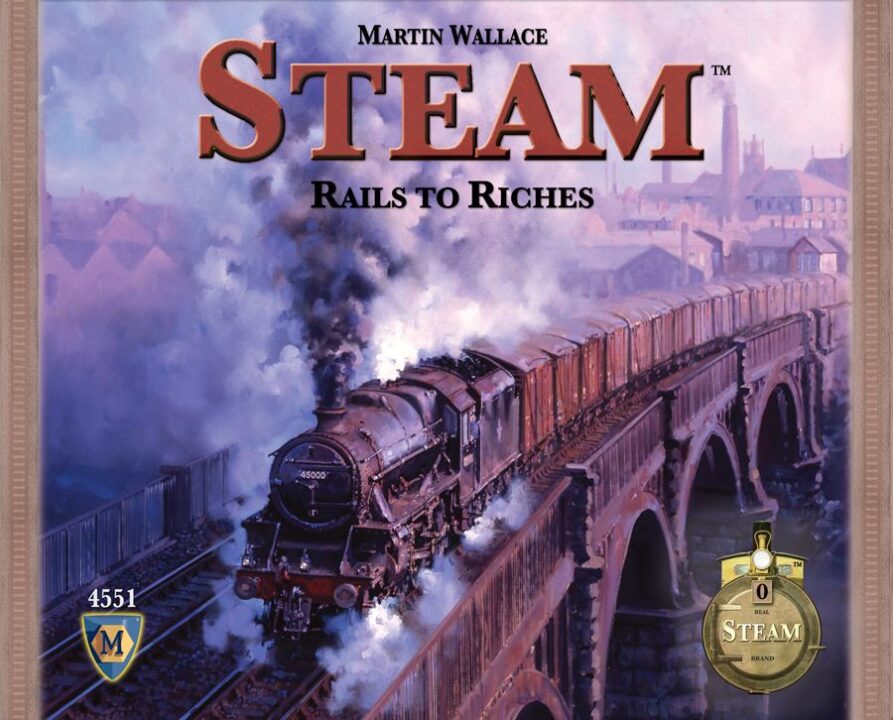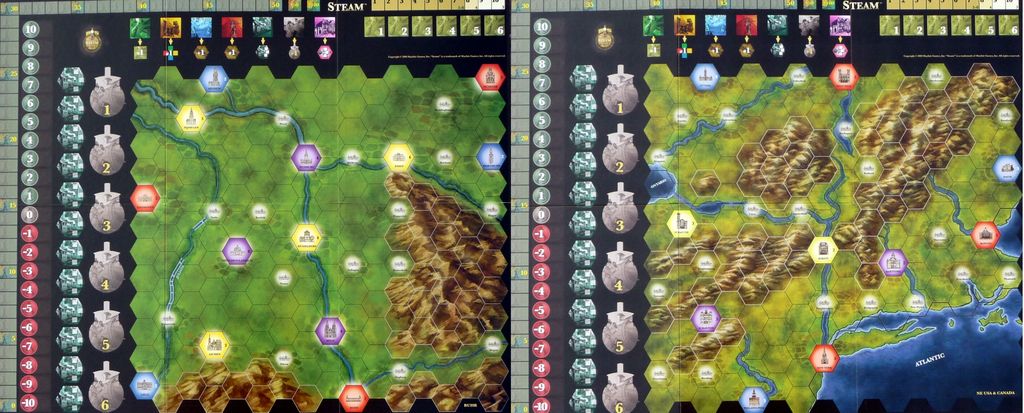Welcome, train tycoons! This is my review of the board game Steam. After one night of heated negotiation, broken friendships, and at least one spilled drink (sorry again, Dave), I can say this game runs on more than just coal. If you like building routes, outsmarting your friends, and feeling both triumphant and broke at the same time, keep reading—there’s a lot on this track!
How It Plays
Setting up
Unfold the board and lay out the hex tiles. Everyone picks a color and grabs matching trains and tokens. Shuffle those cute city tiles and deal out starting goods. Everyone gets starting cash (enough to feel rich for a minute) and a pair of debt cards. We’re ready for rail mayhem!
Gameplay
Each turn, you pick an action tile—this is where the drama starts. Actions let you lay tracks, improve your locomotives, or snag some extra cash if you’re desperate (I have been). Build routes between cities, deliver goods, but watch out as the other players will try to block or out-bid you at every turn. Auctions for turn order can get spicy—hope you brought your poker face!
Winning the game
Once the final round ends, everyone tallies up their points. Points come from delivering goods, owning valuable routes, and making clever upgrades. The person with the most points wins, officially crowned Emperor of Trains (or at least gets bragging rights at your table until next week).
Want to know more? Read our extensive strategy guide for Steam.
Chugging Along: Game Mechanics and Route-Building Fun in Steam
If you like your board games with trains, money, and a mild sense of panic, then Steam is your ticket to ride. Right from the start, you can smell the math in the air. Every turn, you’re laying down track, building routes, and trying to figure out how the heck you’re going to pay for it all without landing yourself in cardboard bankruptcy. Steam is about route-building, but it’s not just point A to B – it’s more like how many twists and turns can you afford before your wallet quietly leaves the room.
I had a blast squeezing every penny out of my network. There’s this constant tension in Steam. You want to expand your rail empire, sure, but you also want to make sure your delivery routes aren’t snatched away by your so-called friends. I watched my buddy Dave put all his cubes in one basket, only to have me swoop in with a sneaky shortcut that left him about as happy as a pigeon in a thunderstorm. Sorry not sorry, Dave. That’s the fun though! There’s a lot of thinking, but it never feels boring. Building routes feels rewarding – especially when your train barrels down the track, delivering cubes and making you rich. Or, in my case, slightly less poor.
The best part? Steam rewards clever planning more than dumb luck. It’s got a learning curve, but it pays off in spades once you get the hang of it. But be warned, next up, I’ll spill the beans on just how cutthroat competition (and maybe a bit of backstabbing) makes player interaction in Steam feel like a family dinner gone wrong.
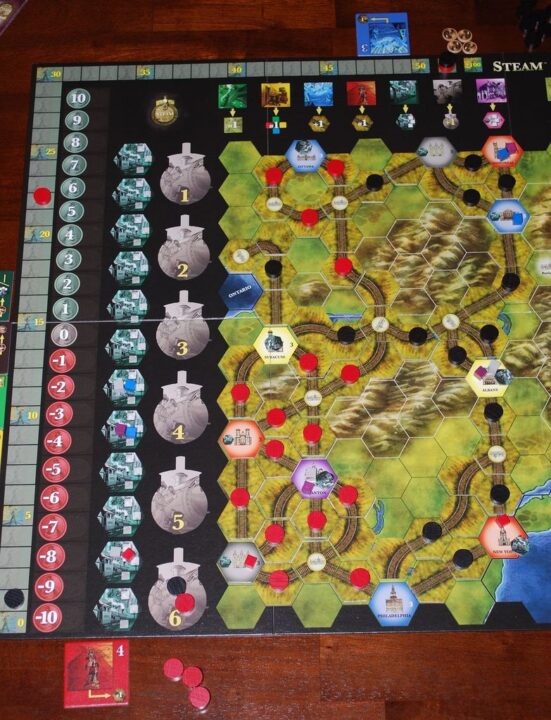
Outsmart, Outbid, Out-deliver: The Human Element in Steam
If you want to see real chaos, just toss my friends and me a copy of Steam. The table turns into a business meeting with more dirty looks and less coffee. Every move you make in Steam can mess up someone else’s plans, and trust me, someone at the table will do it on purpose. There are no loners here – we’re all tangled in this railway rat race together. This is not a game for people who just want to play nice and build their own happy train network in a corner. Nope. You have to pay attention to what everyone else is doing and plot two moves ahead, or you’ll wake up and find your best route hijacked by your so-called ‘teammate’.
Bidding wars are where friendships go to die. The auction system in Steam is brutal, and I’ve seen grown adults try to psyche each other out like poker pros. If you want a key turn order or that sweet little locomotive upgrade, you better bring your best game face. Don’t even get me started on blocking: nothing quite ruins your day like someone claiming a spot you were eyeing for three rounds. I’m still not talking to Steve over that move in our last game.
But oh, it’s all so entertaining! Every decision can ruffle feathers and ignite rivalries, but that’s the spice that makes Steam such a social experience. It’s a wonderful blend of outwitting, bluffing, and tactical sabotage that keeps players on edge the whole time. Next up, let’s dig into how much of your success in Steam comes from pure genius… or if the luck gods get a say!
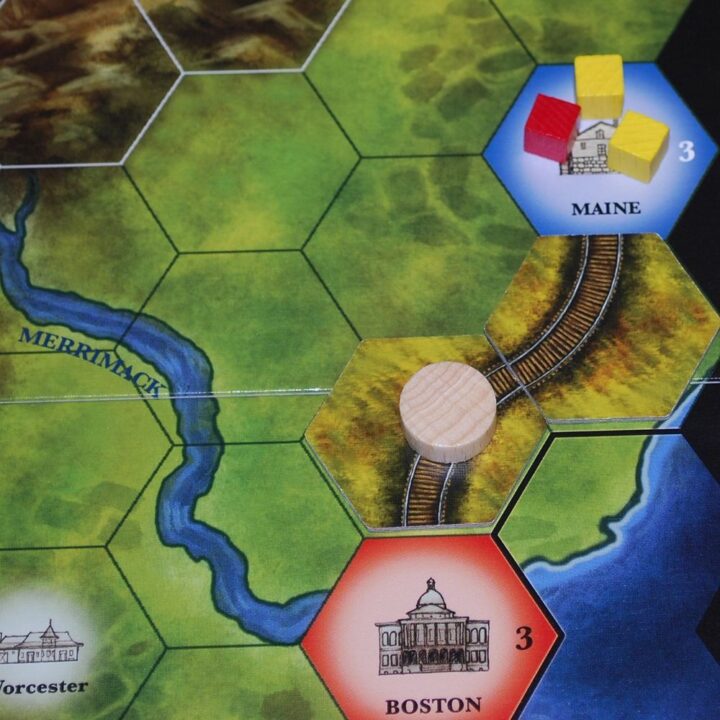
Does Steam Reward Clever Brains or Lucky Dice?
Let’s talk about what sets Steam apart from the usual train-themed parade: it’s a game where your brain muscles actually matter. If you like games where your victory is decided by the roll of a die, Steam is not that train. Here, strategy is the ticket that gets you to the finish line, not just dumb luck.
You map out every move, calculate loans, pick your upgrades, and try to read your opponents like a well-thumbed ticket stub. Even though the game throws the occasional wrench into your gears (like those intense auctions—my palms still get sweaty), most outcomes land squarely on your own choices. I remember thinking I had a massive rail empire locked up, only for my friend Lisa to spot a sneaky delivery route and snatch the win. She earned it. The game lets you see how you could have played better, instead of just blaming the universe for giving your buddy all the good dice rolls.
Of course, there’s still a trace of chaos. The order in which goods and upgrades appear can throw curveballs, but it’s the kind of randomness you can plan around if you have a few brain cells firing. It’s more “oops, plan B” than “here’s a free win for someone!” This keeps things tense and replayable, without making you feel cheated out of a win.
Next, I’ll hop aboard the express to a grand tour of Steam’s component quality and board design—so keep your eyes peeled for cardboard shenanigans and dye-stained hands!
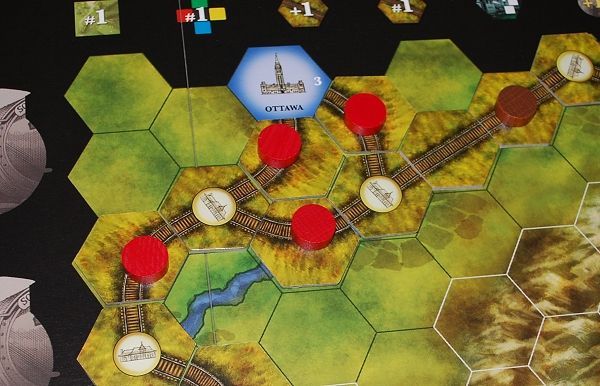
Component Quality and Board Design: Is Steam a Feast for the Eyes?
Let’s talk about Steam’s looks, because even the geekiest rail tycoon wants a game night spread that’ll impress. When I first cracked open Steam, I braced myself for cardboard with the charm of week-old toast. But hey, the game delivers more than I expected. The board is solid and doesn’t do that annoying warped-into-a-banana-shape thing you see with some games. The art? It’s old-school but sharp, with clear lines that actually let you see the tracks and routes. No magnifying glass needed (unless your cat steals your glasses — again).
Tiles feel sturdy enough for intense train drama. I’m not afraid to slam down a connection after someone snipes my route. The wooden train markers are chunky and satisfying to move, and they don’t roll off the table at every sneeze. The money tokens, though, are just thin cardboard. I’ve seen thicker napkins at my local diner. If you play this a lot, you might want to sleeve the paper money or even use poker chips for a fancier vibe (and to prevent accusations of Monopoly-level cheapness).
The rulebook could use some work; it’s blander than boiled potatoes and leaves questions hanging. But overall, Steam does the job well — everything is practical, clear, and surprisingly robust. I wouldn’t call it a beauty queen, but this is that lovable friend who always shows up on time and never borrows your dice without asking.
I recommend Steam for its sturdy bits and clear board. It won’t win art awards, but it sure won’t fall apart during a railway rivalry.
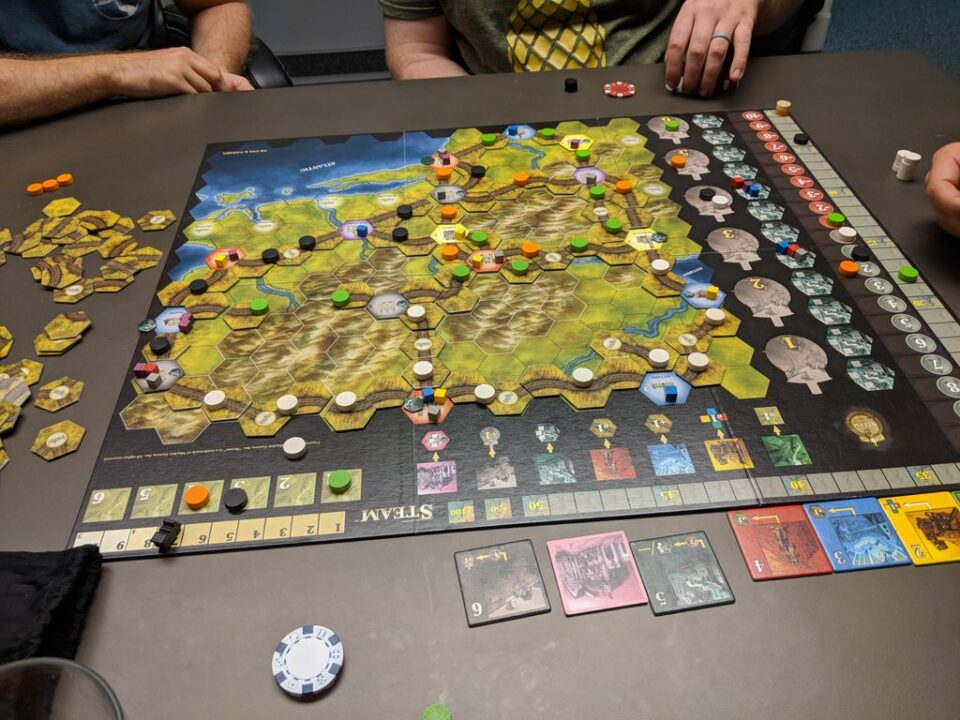
Conclusion
That’s a wrap for my Steam review! Steam wins big points for brains-over-luck gameplay and keep-you-on-your-toes competition. The route-building feels smart and satisfying, and there’s just enough player interaction to make things spicy—but not mean. Sure, the art won’t win any beauty contests, and the rules might scare off your cousin who thinks Monopoly is complicated. But if you want a game night with clever moves and real tension, Steam is worth it. My group keeps asking to play again, so that says a lot! Just remember to bring your thinking cap—and maybe a spare train whistle.

